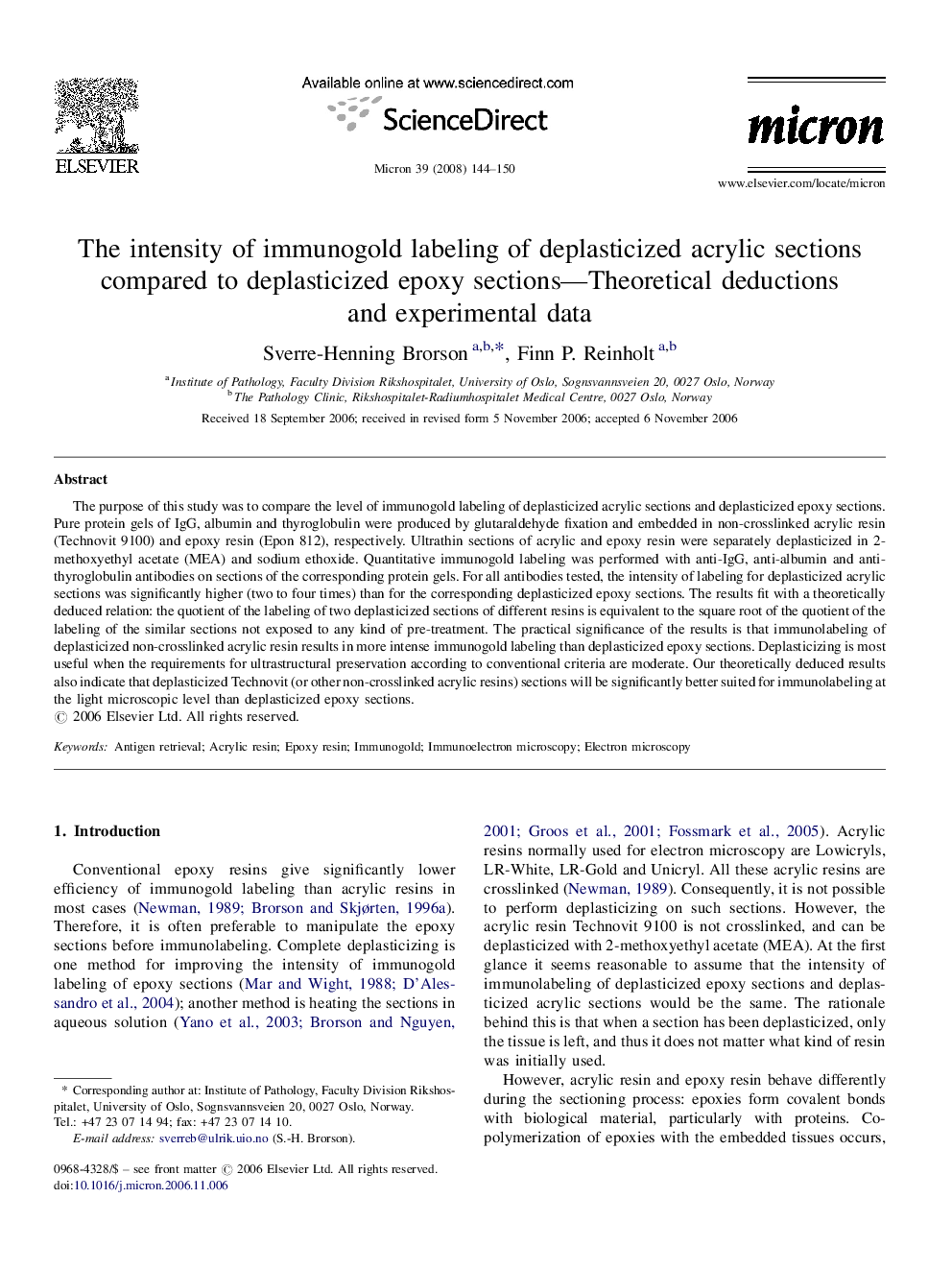| Article ID | Journal | Published Year | Pages | File Type |
|---|---|---|---|---|
| 1589921 | Micron | 2008 | 7 Pages |
The purpose of this study was to compare the level of immunogold labeling of deplasticized acrylic sections and deplasticized epoxy sections. Pure protein gels of IgG, albumin and thyroglobulin were produced by glutaraldehyde fixation and embedded in non-crosslinked acrylic resin (Technovit 9100) and epoxy resin (Epon 812), respectively. Ultrathin sections of acrylic and epoxy resin were separately deplasticized in 2-methoxyethyl acetate (MEA) and sodium ethoxide. Quantitative immunogold labeling was performed with anti-IgG, anti-albumin and anti-thyroglobulin antibodies on sections of the corresponding protein gels. For all antibodies tested, the intensity of labeling for deplasticized acrylic sections was significantly higher (two to four times) than for the corresponding deplasticized epoxy sections. The results fit with a theoretically deduced relation: the quotient of the labeling of two deplasticized sections of different resins is equivalent to the square root of the quotient of the labeling of the similar sections not exposed to any kind of pre-treatment. The practical significance of the results is that immunolabeling of deplasticized non-crosslinked acrylic resin results in more intense immunogold labeling than deplasticized epoxy sections. Deplasticizing is most useful when the requirements for ultrastructural preservation according to conventional criteria are moderate. Our theoretically deduced results also indicate that deplasticized Technovit (or other non-crosslinked acrylic resins) sections will be significantly better suited for immunolabeling at the light microscopic level than deplasticized epoxy sections.
